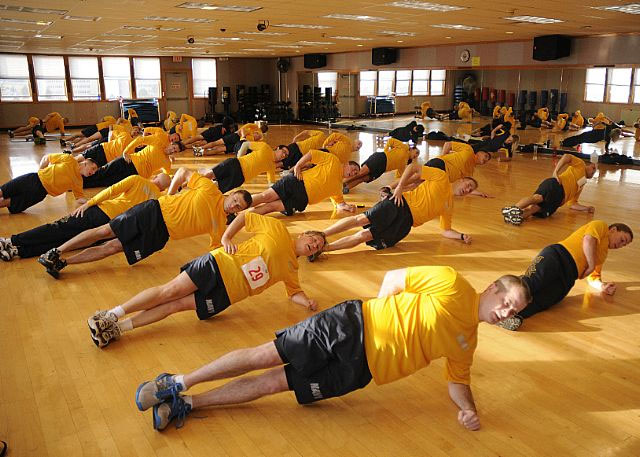Military Physical Fitness Requirements

Introduction to Military Physical Fitness

Military physical fitness is a critical aspect of a soldier’s overall readiness and capability to perform their duties effectively. The physical demands of military service can be extreme, and soldiers must be in top physical condition to handle the rigors of combat, deployments, and other challenging situations. In this blog post, we will explore the physical fitness requirements for military personnel, including the types of exercises and training programs used to prepare soldiers for service.
Physical Fitness Requirements for Military Personnel

The physical fitness requirements for military personnel vary depending on the branch of service, occupation, and duty assignment. However, there are some common standards that apply to all military personnel. These standards include: * Cardiovascular endurance: The ability to perform aerobic exercises, such as running, swimming, and cycling, for extended periods. * Muscular strength and endurance: The ability to lift, carry, and move heavy objects, as well as perform repetitive tasks that require muscular endurance. * Flexibility and mobility: The ability to move freely and easily, with a full range of motion in all joints. * Body composition: The percentage of body fat, which is used to assess overall health and fitness.
Types of Military Physical Fitness Tests

There are several types of physical fitness tests used by the military to assess a soldier’s fitness level. These tests include: * Army Physical Fitness Test (APFT): This test consists of three events: push-ups, sit-ups, and a 2-mile run. * Navy Physical Readiness Test (PRT): This test consists of three events: push-ups, sit-ups, and a 1.5-mile run. * Air Force Physical Fitness Test: This test consists of four events: push-ups, sit-ups, a 1.5-mile run, and a body composition assessment. * Marine Corps Physical Fitness Test (PFT): This test consists of three events: pull-ups, crunches, and a 3-mile run.
Training Programs for Military Physical Fitness

Military personnel use a variety of training programs to prepare for physical fitness tests and to maintain their overall fitness level. These programs include: * Resistance training: This type of training involves using weights, resistance bands, or other equipment to build muscular strength and endurance. * Cardiovascular training: This type of training involves performing aerobic exercises, such as running, swimming, and cycling, to improve cardiovascular endurance. * High-intensity interval training (HIIT): This type of training involves short bursts of high-intensity exercise, followed by brief periods of rest. * Plyometric training: This type of training involves explosive, jump-based exercises, such as box jumps and burpees.
| Branch of Service | Physical Fitness Test | Events |
|---|---|---|
| Army | APFT | Push-ups, sit-ups, 2-mile run |
| Navy | PRT | Push-ups, sit-ups, 1.5-mile run |
| Air Force | Physical Fitness Test | Push-ups, sit-ups, 1.5-mile run, body composition |
| Marine Corps | PFT | Pull-ups, crunches, 3-mile run |

💪 Note: The physical fitness requirements and tests used by the military can vary depending on the branch of service, occupation, and duty assignment.
Importance of Military Physical Fitness

Military physical fitness is essential for several reasons: * Combat readiness: Soldiers must be in top physical condition to perform their duties effectively in combat situations. * Injury prevention: Regular exercise and physical training can help prevent injuries and reduce the risk of illness. * Mental toughness: Physical fitness training can help build mental toughness and resilience, which are essential for military personnel. * Teamwork and camaraderie: Physical fitness training can help build teamwork and camaraderie among soldiers, which is critical for military success.
Challenges of Military Physical Fitness

Military physical fitness can be challenging for several reasons: * Intensity and frequency of training: Military physical training can be intense and frequent, which can be challenging for some soldiers. * Injury and illness: Soldiers may experience injuries or illnesses that can affect their physical fitness level. * Deployments and combat: Soldiers may be deployed to combat zones or other challenging environments, which can affect their physical fitness level. * Limited access to facilities and equipment: Soldiers may have limited access to fitness facilities and equipment, which can make it challenging to maintain their physical fitness level.
What is the purpose of military physical fitness tests?

+
The purpose of military physical fitness tests is to assess a soldier's fitness level and ensure that they are capable of performing their duties effectively.
What types of exercises are used in military physical fitness training?

+
Military physical fitness training includes a variety of exercises, such as resistance training, cardiovascular training, high-intensity interval training, and plyometric training.
Why is military physical fitness important?

+
Military physical fitness is important because it helps soldiers perform their duties effectively, prevents injuries and illnesses, and builds mental toughness and resilience.
In summary, military physical fitness is a critical aspect of a soldier’s overall readiness and capability to perform their duties effectively. The physical fitness requirements for military personnel vary depending on the branch of service, occupation, and duty assignment, but there are some common standards that apply to all military personnel. Military physical fitness training includes a variety of exercises, such as resistance training, cardiovascular training, high-intensity interval training, and plyometric training. The importance of military physical fitness cannot be overstated, as it helps soldiers perform their duties effectively, prevents injuries and illnesses, and builds mental toughness and resilience. By understanding the physical fitness requirements and training programs used by the military, soldiers can better prepare themselves for the demands of military service and maintain their overall fitness level.



